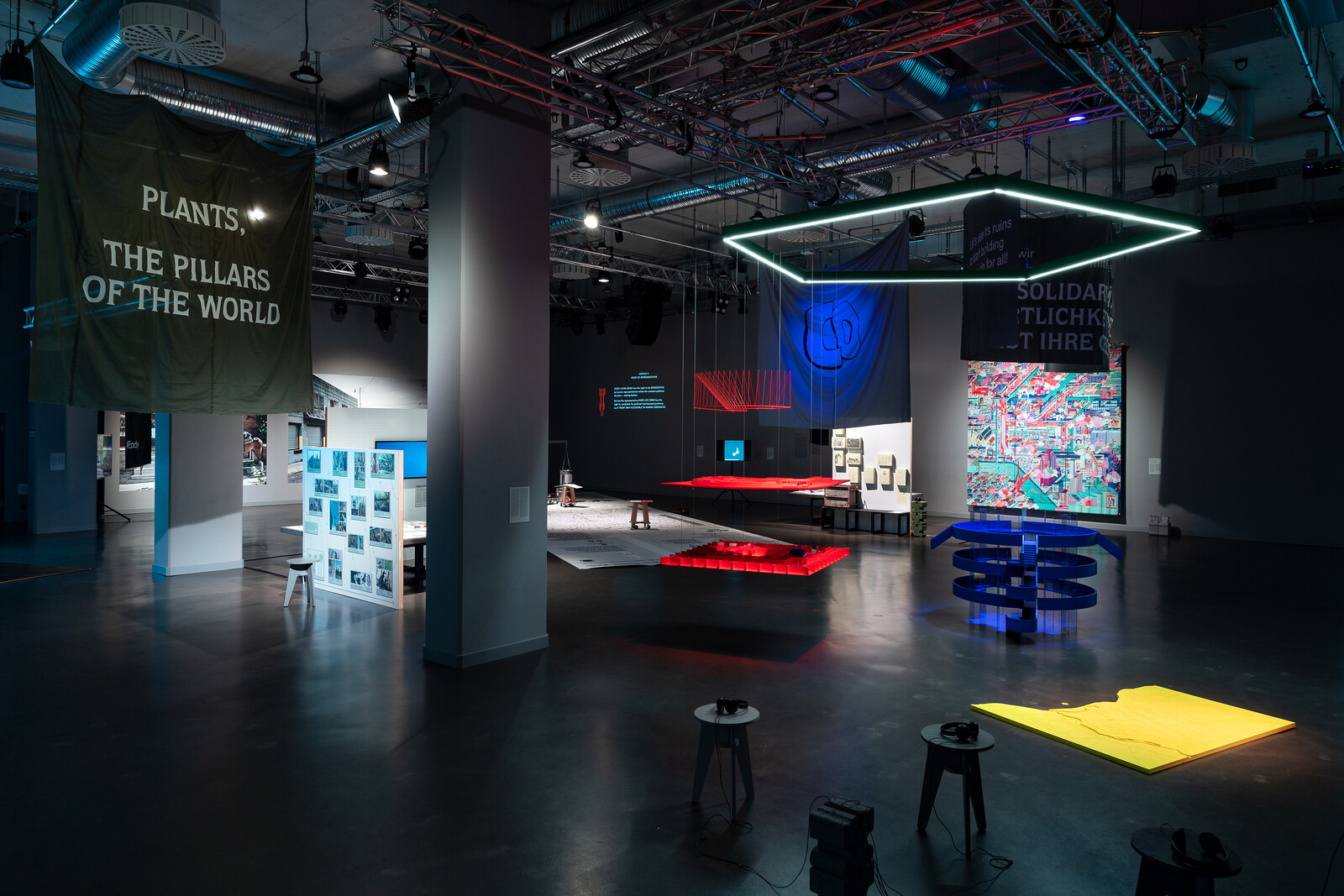Exhibition, urban explorations, and discourse
June 4–July 4, 2021
Gerichtstraße 35
13347 Berlin
Germany
Excerpt from the manifesto by Fahim Amir:
The universal human body as a model is more uncertain than ever before. On the shores of the future, architects stand amidst a proliferating crowd of cyborg bodies, prosthetic bodies, animal bodies, por-nographic, mutated and tortuous bodies, disabled, migrated and colonized bodies, flying, scurrying, and crawling bodies. Instead of referring back to the questionable idyll of an imagined pre-modernity, cohabitation stands for the lived exploration of solidarity as the tenderness of the species. […]
Cohabitation means “living with”—something that is not always pleasant, innocent, beautiful, or free of danger. “Living with” fosters the development of neighborhoods, which are the opposite of gated communities, because neighbors are beings whose presence we did not choose. It includes complicity with plants, even those considered weeds, which grow on the side of the road and elsewhere. Plants are the pillars of the world; with their bodies and metabolism they hold the earth down and the sky up. Without them there would be no cities, no people or animals.
Cohabitation requires rethinking the political. The term polis originally referred to two things: the religious and administrative center of the ancient city-state, and the collective citizenry that gathered there. For as long as the term has existed, the political has been defined in Western thought traditions as a place to which neither plants, animals, slaves, nor women have access, “but in which only free anthropodes may hang around, in that know-it-all style of theirs, while the others toil away at the margins, or are eaten wholesale.” The promise of cohabitation is: The walls of the polis have fallen. Let us begin to build with its ruins a new city for all.
Read the entire manifesto online.
Contributions of the exhibition by: Alicia Agustín; Moritz Ahlert & Alsino Skowronnek with Pollinations in Blatant Space (Thomas Haferlach, Adrien Bitton & Niels Warncke); Fahim Amir; Animalesque; Animali Domestici; Ant Farm; Babi thinkers (Maylis Brenner, Yemi Kacoutie, Aziz Doumbia, Ferrand Acho, Issa Diabaté); Sammy Baloji; Marcel Broodthaers; Carson Chan; Club Real; Theo Deutinger, Shelia Jap, Charlotte Kaulen, Pia Prantl, Nikolas Susanto; Ines Doujak; Finn Rabbitt Dove; Marc Frohn; Cyprien Gaillard; Thomas E. Hauck; Candida Höfer; Ina Hsu; Kolbeinn Hugi; Krõõt Juurak & Alex Bailey; Daniela Kinateder; Ann Sophie Lindström; Maissa Maatouk; Marcus Maeder; Zoë Mc Pherson; Modern Temperament (Oliver Klimpel, Till Sperrle); László Moholy-Nagy; OLA – Office for Living Architecture (Ferdinand Ludwig, Daniel Schönle, Jakob Rauscher) with GTLA / TU München; Daniel Poller; Yan Wang Preston; Professur R+E / KIT (Marc Frohn, Tim Panzer, Federico Perugini & students); Ben Rivers; Hanna Rullmann & Faiza Ahmad Khan; station+ / D-ARCH, ETH Zürich (Marta Fernandez, Iris Hilton, Roberta Jurcic with Jakob Michael Birn & students); Sunaura Taylor; Urban Fauna Lab; WORKac.
Cohabitation is a project by ARCH+ in cooperation with silent green, funded by the German Federal Cultural Foundation. Support for the Cohabitation Urban Explorations comes from the German Federal Agency for Civic Education. Cohabitation Discourse: Zoopolis Berlin is funded by the Berlin Senate Department for Culture and Europe. Cooperation partners include: Goethe-Institut Côte d’Ivoire; Kunstraum Innsbruck; Museum für Naturkunde Berlin; Spreepark/Grün Berlin.
Artistic direction: Marion von Osten*, Christian Hiller, Alexandra Nehmer, Anh-Linh Ngo, Peter Spillmann.
Team: Felix Hofmann, Barbara Schindler, Jakob Walter, Linda Winkler, Franziska Zahl.
Design: Modern Temperament/Oliver Klimpel, Till Sperrle.
* Marion von Osten developed the concept with the curatorial team. She died in November 2020. This project is dedicated to her memory.





